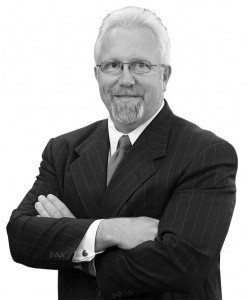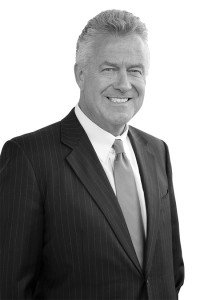
By Darrell Delamaide
With algorithms determining what books we purchase and what films we watch, it was only a matter of time before these mathematical formulas programmed into software would tell us what stocks and bonds to buy.
Robo-advisors, like Wealthfront and Betterment, are the newest innovation in investing, as a low-fee, low-threshold alternative to real live advisors. Their appeal has grown to the point that brokerage firm Charles Schwab announced in October that it would be offering its own version, Schwab Intelligent Portfolios.
The new services are designed with young, tech-savvy professionals in mind who are just beginning to accumulate savings. With account minimums as low as $5,000 to $10,000 and fees only a fraction of 1 percent, they are an investing alternative for people who don’t have the half a million dollars many investment managers require as a minimum for opening an account.
But whether an investor has thousands for a robo-advisor or millions for an investment management firm, the same rules for getting a good return apply.
“Investing basics are still the same,” says Susan Chesson, an investment advisor at the Fairfax office of Middleburg-based Focus Wealth Management, “but the environment has changed.”
Robo-advisors are the latest innovation in investing after online brokerage accounts, exchange-traded funds (ETFs), do-it-yourself asset allocation models and the full service offered by registered investment advisors (RIAs) and certified financial planners. These offer variations in fees and commissions, but don’t change how money should be invested to provide the right balance between risk and return.
“Allocation is probably the most important investment basic,” says Stephan Cassaday, chief executive of Cassaday & Company in McLean.
The four classic categories of assets—stocks, bonds, cash and hard assets like real estate or commodities—remain the same.
“Everyone should have all four categories in their portfolio,” says Cassaday.

The four classic categories of assets—stocks, bonds, cash and hard assets like real estate or commodities—remain the same.
Turning the temperature up and down
Stocks, which can swing wildly in price depending on the economy and the success of the company, and hard assets weigh a portfolio toward higher risk and potentially higher return. Bonds and other fixed-income securities and cash, which includes certificates of deposit and money market funds, have lower risk, but correspondingly lower returns as well. Investors can vary the portion of each depending on their appetite for risk.
“That’s how you turn the temperature up or down,” says Cassaday.

chief executive of Capital Fiduciary Advisors. Photo by James Kim.
Traditionally, younger people were encouraged to put more money into stocks, because they want to grow their wealth and they have time to ride out downturns in the market, while older people were to invest more in fixed-income, a safer bet as they approached retirement.
Vanguard founder John Bogle even had a rule of thumb that one’s age is the portion of the portfolio that should be in bonds—only 25 percent, say, at the beginning of a career, and 65 percent at retirement.
“We don’t really subscribe to that rule,” says Chesson, echoing other advisors. An efficient portfolio should generally maintain a higher portion of stocks regardless of age.
For this advisor, the first thing investors need to do is “develop a plan and then stick to it.”
External factors like which political party controls Congress or what the Federal Reserve is likely to do with interest rates should not change this plan.
“A lot of folks are driven by greed or fear,” Chesson says, “but unless your life changes, you should not change your investing strategy.”
This is one of the main reasons, says John Wolff, chief executive of Capital Fiduciary Advisors in Reston, that people like to have an investment advisor as a partner when they have substantial assets to invest.
“Investing is not a hobby, or easy,” he says, “it takes a lot of technical skill and discipline.”
People who come into a sum of money through inheritance or from selling a company—and there are lot of people like that in prosperous Northern Virginia—will want to seek an advisor to help manage their investments. It doesn’t mean the investor is giving up responsibility for the investments, but is benefiting from expert advice.
“Take your time and explore risk and asset classes like equities, commodities and real estate,” Wolff recommends.
Investors should take a long-term perspective, he says, of at least three to five years.
That initial allocation among the investment categories will determine the success of your portfolio, agrees Cassaday. “It is much more important than Ebola, ISIS or Europe,” he says.
Some people, he thinks, get a thrill from investing according to the emotion of the moment, but that is a mistake.
“Investing is a very difficult slog that takes focus and discipline,” he says.
Boring is good
Chesson says some of her clients—high-net-worth individuals with more than a million dollars—keep a portion of their portfolio as a “Monte Carlo” account that they can gamble with and play the market.
Investing Glossary
Robo-advisors: a financial advisor who provides services via online with no or minimal human interaction
Exchange-Traded Funds (EFTs): funds that track indexes (NASDAQ 100, S&P 500, Dow Jones, etc.) but trade like stocks. Buying an ETF is buying shares of a portfolio that tracks the index
Index Mutual Funds: a mutual fund that tracks the indexes; it provides broad exposure, low operating expense and low turnover
Fixed-Income Securities: an investment, such as government bonds, that have a set increase regardless of stock variables
Certificate of Deposit (CD): a promissory note from the bank, issued with a maturity date, fixed-interest rate, that restricts holders from withdrawing the funds until a set date
Money Market Funds: an account that draws interest in higher sums than a typical savings account, and acts as a quasi-checking account with limited check-writing abilities; higher minimum balances are often required
But most are inexperienced at investing or don’t have the time to monitor investments and prefer to let the advisor manage the account once the basic strategy has been set.
“It’s OK to be boring when you’re investing,” Chesson says. “Excitement is not something you want.”
As evidence has accumulated that active money managers are rarely able to beat the market with their timing and stock-picking, many investors have focused on index mutual funds and exchange-traded funds to get a broad exposure to an asset class or a subset of that class.
Institutional investors have recently been moving money out of hedge funds, Cassaday notes, as these active managers have failed to deliver the high returns to justify their premium fees.
ETFs, which are listed and traded on stock exchanges like stocks, offer a wide variety of indexed investments to various types of stocks, as well as real estate through real estate investment trusts and commodities like gold or silver or oil—or water. These offer broad exposure to a market with built-in diversification and are highly liquid.
ETFs often have fees that are lower and more transparent than traditional mutual funds, even index funds. On the minus side, notes advisor Chesson, because they are traded on a stock exchange, the price of an ETF is sometimes at a premium or discount to the underlying assets—it may not reflect the actual value of the assets.
For this reason, Chesson prefers institutional mutual funds for her clients. These are not available to retail investors but only to RIAs, who get the funds for a “wholesale” price in the sense that the large volume enables the managers to offer them at lower fees. Also, these funds have a lower cash component—which can be a drag on investment returns—because redemptions are not so frequent.

Unfortunately, the services of Chesson and many of her RIA colleagues are only available to investors with half a million or a million dollars to invest.
Capital Fiduciary Advisors does not have a minimum account threshold, explains CEO Wolff, but it does have a minimum annual fee of $10,000—which corresponds to the standard 1 percent fee on assets of $1 million. This, needless to say, discourages potential clients with smaller amounts.
However, the firm does have a program of financial planning assistance for “next gen” investors with a fixed-fee arrangement that waives the standard minimum.
“They may have less than a million, but they need help, too,” says Wolff.
For those who don’t inherit or sell a business and are at the beginning of wealth accumulation, these investment professionals recommend online tools available at fund groups like Fidelity or Vanguard for managing one’s own portfolio, or the new robo-advisers, or constructing a simple portfolio through an online or discount broker following the basic investment principles of diversification.
First, though, investors should be sure they are getting the full benefit of tax-deferred retirement accounts like 401(k) or 403(b) or individual retirement accounts (IRAs).
“You should absolutely maximize your 401(k),” says Cassaday, making sure to get the maximum in matching funds from employers. “These have all the elements for investing success.”
Money is a tool
Also, individuals should keep in mind that investments are part of a broader plan for prudent money management, regardless of how much they have available to invest.
“Money is a tool,” says Chesson, “it is so much more than investing.”
While full-service investment advisors include financial planning, there are also financial planners who do not manage investments and do not have minimum account thresholds. Rather, they charge a fee for helping a client construct an overall plan for finances.

Some basic rules for a good financial plan, says Cassaday, include a budget that gives one a clear picture of where money is going each month. It should take account of retirement, including maxing out retirement plans. It is also prudent to set aside an emergency fund that will cover three months of expenses, and perhaps a supplementary insurance plan in single-earner families.
Whether managing an investment directly or relying on an advisor, investors should consolidate and simplify their accounts in one institution, these professionals recommend. This makes it easier to diversify without duplication, economize on fees and paperwork, and optimize tax benefits. So, for instance, if one has retirement accounts from various employers, it makes more sense to roll them into one account.
What investors should avoid, professionals generally agree, is letting political passions prompt them to avoid investing in certain companies or industries.
“We would discourage people from doing this,” says Cassaday. “You are not going to affect them financially, that’s not the way it works.”
The purpose of investing is to accumulate wealth, he says. “Then you can give to causes you want and have a real impact.”
Many retail investors have become skeptical about the stock market in an era where big traders have a computer planted at the stock exchange that can get their trades in ahead of retail customers. Financial writer Michael Lewis’s latest bestseller, “Flash Boys: A Wall Street Revolt,” went so far as to say this edge for high-frequency traders means the stock market is rigged.
“Michael Lewis should be ignored,” says Cassaday. “High-frequency trading serves a therapeutic purpose.”
Without the arbitrage of these traders, there would be distortions in the market, he says. The advantage to these traders, such as it is, is measured in “nano-pennies.” The fact that customers are now fleeing hedge funds is proof that this type of trading doesn’t guarantee success.
Nonetheless, investment managers are reluctant to recommend stock-picking or investing in individual stocks.
“You should not do it unless you can afford to lose it,” says Chesson. She notes that numerous investors in Northern Virginia had invested heavily in the stocks of Fannie Mae and Freddie Mac during the housing boom, and they lost millions when the market collapsed and the government effectively nationalized the two mortgage lenders.
Capital Fiduciary’s Wolff, however, is willing to unhesitatingly recommend one individual stock. “Apple has been a favorite of mine for years,” he says. “I started investing in it in 1984 and the story still resonates today.”
(January 2015)




